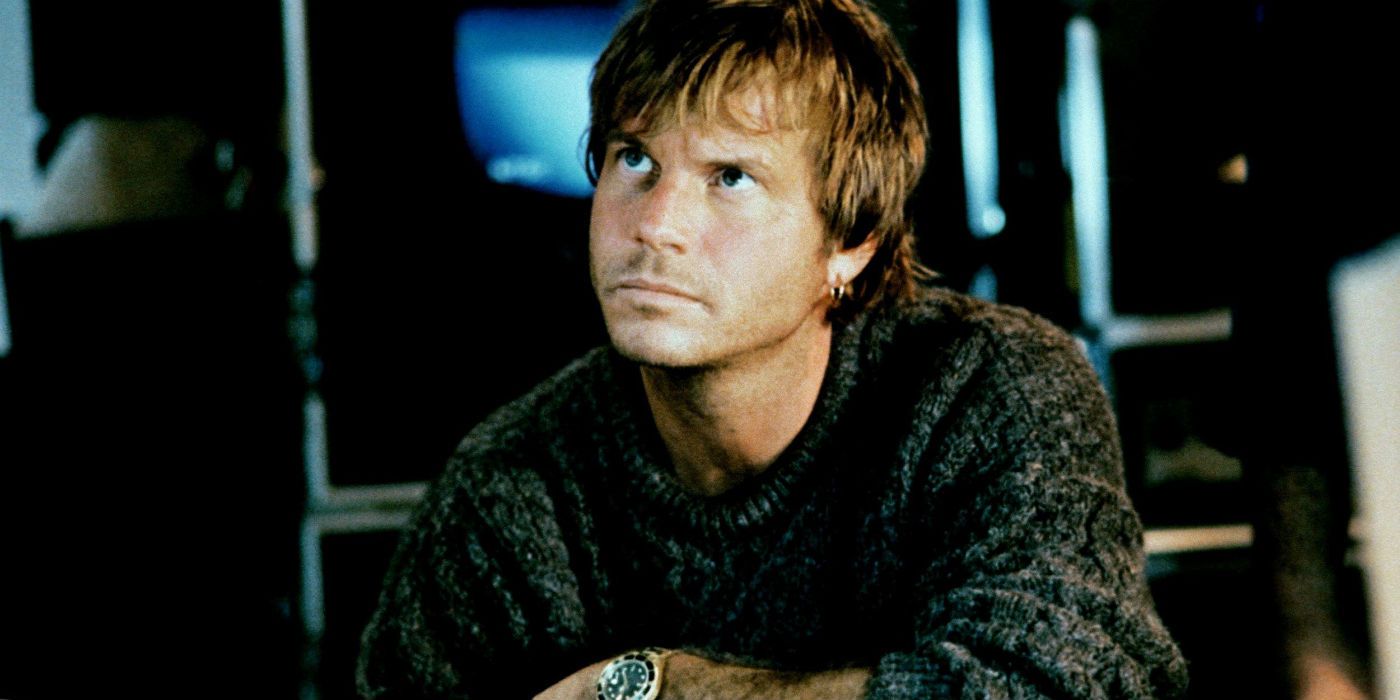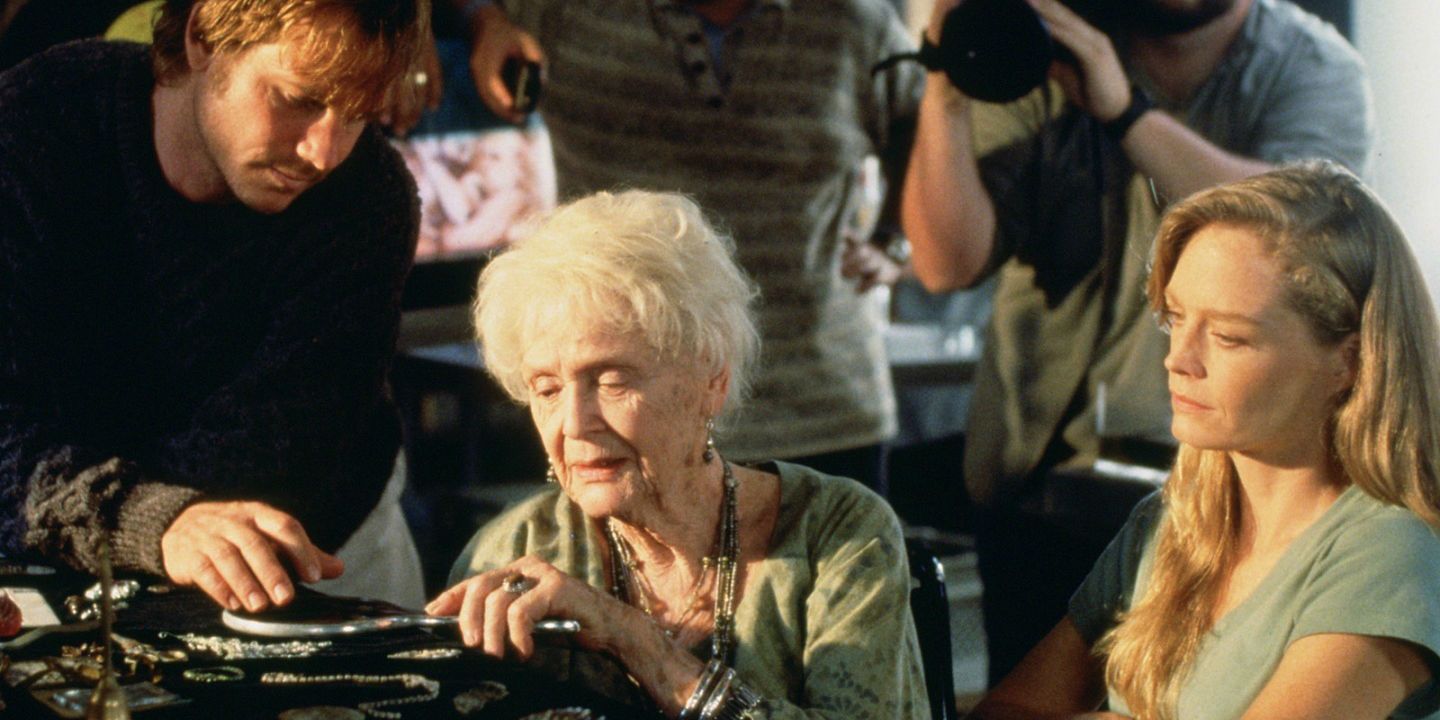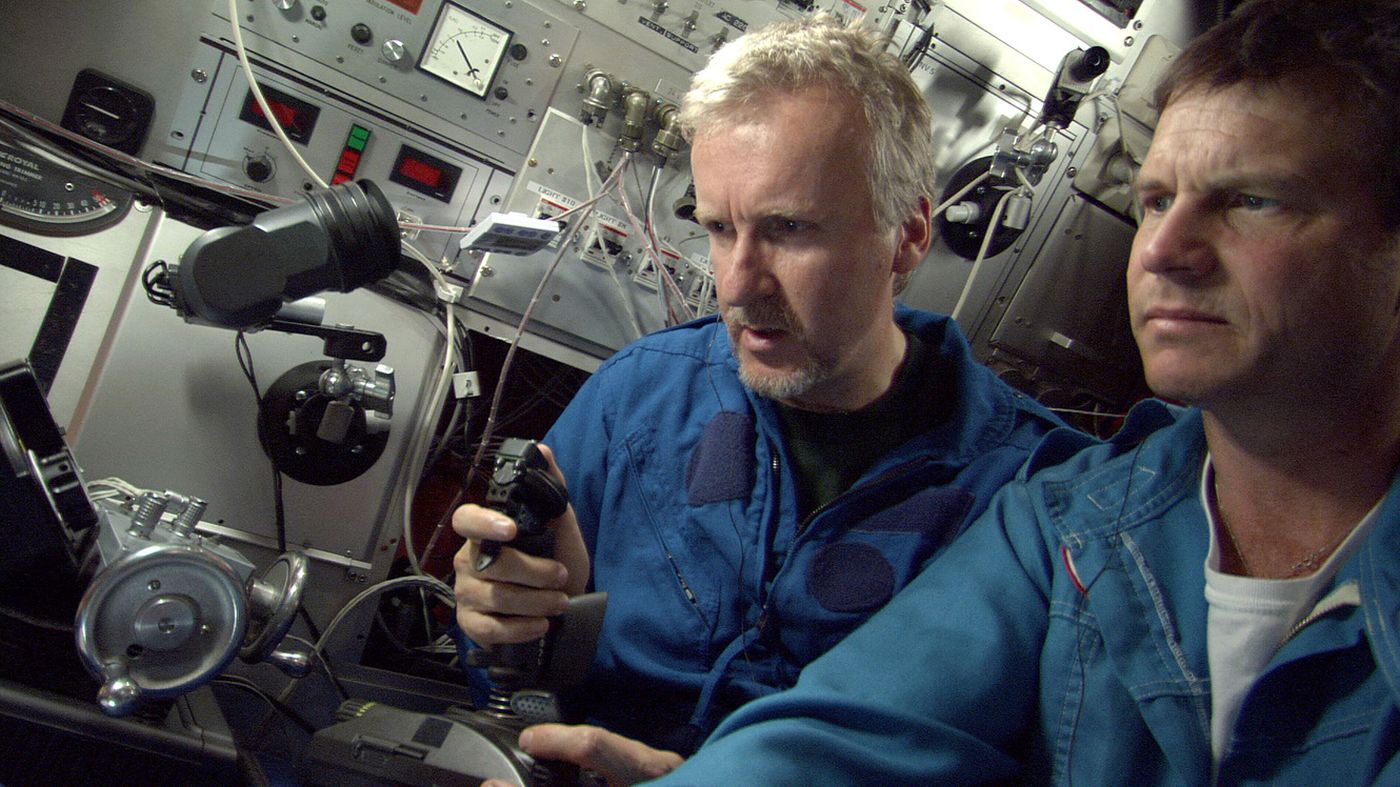The unexpected death of Bill Paxton at 61 due to complications from surgery left millions of fans of the beloved actor stunned and saddened. Currently starring in the CBS reboot of the 2001 hit film Training Day, Paxton had also completed his work in the upcoming feature film adaptation of Dave Eggers' novel The Circle. In his prolific 40 year career in front of and behind the camera (he directed his first feature film, Frailty, in 2001), Paxton is perhaps best known for his work with his friend and longtime collaborator, director James Cameron.
As Cameron noted in a tribute he penned for Vanity Fair, he and Paxton shared "36 years of making films together, helping develop each others projects, going on scuba diving trips together, watching each others kids growing up, even diving the Titanic wreck together in Russian subs." Appearing in many of Cameron's most popular blockbusters, Paxton had memorable roles as an LA street punk dispatched by Arnold Schwarzenegger's killer cyborg in The Terminator, as an excitable space marine in Aliens, as a used car salesman pretending to be a spy in True Lies, and as a treasure hunter in Titanic. Paxton's role in Titanic is that epic film's most underrated component.
The unprecedented success of Titanic has since become nearly as legendary as the tragic shipwreck the film was based upon. With an unmatched run as the number one movie at the box office for 15 consecutive weeks since its December 1997 premiere, Titanic went on to become the highest-grossing film of all-time worldwide with a total of $2,185,372,302 (after its 2012 theatrical reissue). It would hold the record for 12 years until Cameron's own Avatar surpassed it in 2010. The ill-fated, Academy Award-winning love story of Jack Dawson (Leonardo DiCaprio) and Rose DeWitt Bukater (Kate Winslet) set against the real-life tragedy of the sinking of the "unsinkable" ocean liner has resonated among moviegoers for a generation and has become an indelible part of cinematic history and of pop culture.
Alongside the star-making performances by DiCaprio and Winslet, the Oscar-winning direction by Cameron, Titanic's astounding visual effects, and the Billboard chart-topping hit song "My Heart Will Go On" by Celine Dion as the primary reasons for Titanic's blockbuster success and global acclaim, the film has a (not-so-secret) weapon: Bill Paxton.
Are You Ready to Go Back To Titanic?
In Titanic, Paxton anchors the modern day framing sequences that wrap around the bulk of the film's story, which is told in flashback. Paxton portrays Brock Lovett, a treasure hunter aboard the research vessel Akademik Mstislav Keldysh. Lovett and his team are conducting a salvage operation in the North Atlantic, searching the wreck of the RMS Titanic, which struck an iceberg and was lost on April 14, 1912. Lovett recovers a safe containing a drawing of a woman wearing the coveted item Lovett is searching for around her neck: a diamond necklace known as the Heart of the Ocean. The woman in the drawing, Rose Dawson Calvert, is a survivor of the Titanic. Portrayed in the twilight of her years by Gloria Stuart, Rose is invited on board the Keldysh to meet with Lovett. From there, Rose narrates her story to Lovett and his crew, telling them of her forbidden romance with the penniless artist named Jack Dawson she met on the Titanic, and the circumstances that led to his heroic sacrifice so she could survive.
From a storytelling perspective, the modern day framing sequences of Titanic, while not as well-remembered as the romantic sweep of Jack and Rose's story, were a vital component as to why the movie worked as well as it did. Acknowledging that the Titanic's sinking was a historical event from nearly a century ago that audiences were only vaguely aware of, Cameron wisely used the Lovett scenes as a means to explain the technical details to everyone watching. Cameron even brilliantly included a scene where Lovett used a computer simulation to depict how the ship struck the iceberg, broke apart and sank. Armed with the cold hard facts of the event, the audience was then prepared with what to expect in terms of what was to happen to the ship itself, allowing them to now focus on the human side of Rose's story about her and Jack. "Are you ready to go back to Titanic?" Lovett asks old Rose, launching us into the true heart of Titanic's tale.
Cameron was extremely savvy in choosing a well-known actor whom the audience likes and trusts, and who could therefore be both a surrogate for everyone munching popcorn in their seats - as well as a stand-in for Cameron himself. Lovett's passion for discovering the Titanic and the secrets buried in the icy depths of the ocean is in fact Cameron's own passion for the same, and for telling his fictional Romeo & Juliet love story about Jack and Rose. The charming Paxton's effusive everyman qualities gives the viewers someone to readily identify with. Paxton's Lovett was the audience's window into the story of Titanic; his initial skepticism of Rose's story, which gradually gives way to him believing her tale wholeheartedly, is the same journey the audience undertakes. Paxton and everyone watching Titanic shared this experience together. It's because Lovett believed Rose's story about Jack and the Heart of the Ocean that the audience felt credence to feel the same.
"I'll never let go, Jack," said by Kate Winslet, is one of the most famous lines from Titanic, but Paxton utters a line of dialogue just as pivotal, if not as famous and oft-repeated. After Rose has told her tale and we've witnessed the events of Titanic as she described them, Lovett has a scene on the deck of the Keldysh with Rose's niece, played by Suzy Amis. Deeply affected emotionally, as the audience was, by Rose's story, Lovett has come to realize his quest for the Heart of the Ocean necklace - a mere trinket in the grand scheme of things- was folly. A changed man, Lovett says, "Three years I've thought of nothing except Titanic, but I never got it. I never let it in."
Two important feats are accomplished by this line of dialogue. One, Lovett the character comes to realize that the true treasure of Titanic is in the humanity of its story, the hundreds lives tragically cut short, and the courage of the few who managed to survive and continue on to embrace a second chance at life. But from the filmmaker's perspective, Cameron uses this line, and Paxton's perfectly resonant delivery, to communicate to the audience that it's okay to let themselves feel for Rose and Jack's story, and to feel for the loss of all of those real-life lives. This is also paramount because coming up next is Cameron's big finish, the dream sequence where the audience sees the Titanic and all aboard her reborn through Rose's eyes, as she ascends the grand staircase to find Jack, young and handsome as ever, waiting to kiss her as everyone applauds. It's a grand, schmaltzy, indulgently sentimental finale - and it unabashedly works, due in large part to Bill Paxton setting it up, assuring the audience they have permission to allow themselves to let go of their cynicism; that they can "let Titanic in." Of course, audiences did all over the world, and the rest is film history.
Ghosts of the Abyss
A few years after Titanic left theaters, Cameron and Paxton returned with Titanic 3D: Ghosts of the Abyss, a 2003 documentary filmed with IMAX cameras. Cameron and his research team, along with Paxton, who would serve as the documentary's narrator, staged an deep sea diving expedition to the wreck of the RMS Titanic. With IMAX cameras mounted on their submersibles, they shot the most detailed footage yet of the Titanic's wreckage, which were then superimposed with CGI images of the ship's original appearance.
Paxton again loaned his wide-eyed, everyman charm to the documentary, serving as the audience's window into the science involved and giving emotional heft to the imagery Cameron captured. One of the dives took place on September 11, 2001, and the crew learned about the 9/11 attack upon reaching the surface, which added an extra layer of resonance to the documentary. Ghosts of the Abyss is the second Titanic project by James Cameron that wouldn't have had nearly the same impact without Bill Paxton.
_____
When Titanic won him his Best Director Oscar, James Cameron affected the moniker the "King of the World," but he could not have achieved one of his greatest and most popular successes without the reliable help of his close friend Bill Paxton, one of his best - and most underrated - collaborators. It speaks volumes about their friendship and about how much Cameron valued Paxton that when he set forth to make Titanic, he knew Paxton was the ideal person to help guide the audience through his now-classic love story. And when Cameron chose to return to the Titanic in real life, he returned with Paxton at his side. We mourn the loss of Bill Paxton, a talented artist and, by his friends and co-workers' accounts, a fine human being. As Cameron wrote in his tribute, "The world is a lesser place for his passing, and I will profoundly miss him." We, Bill Paxton's fans, will miss him as well.



